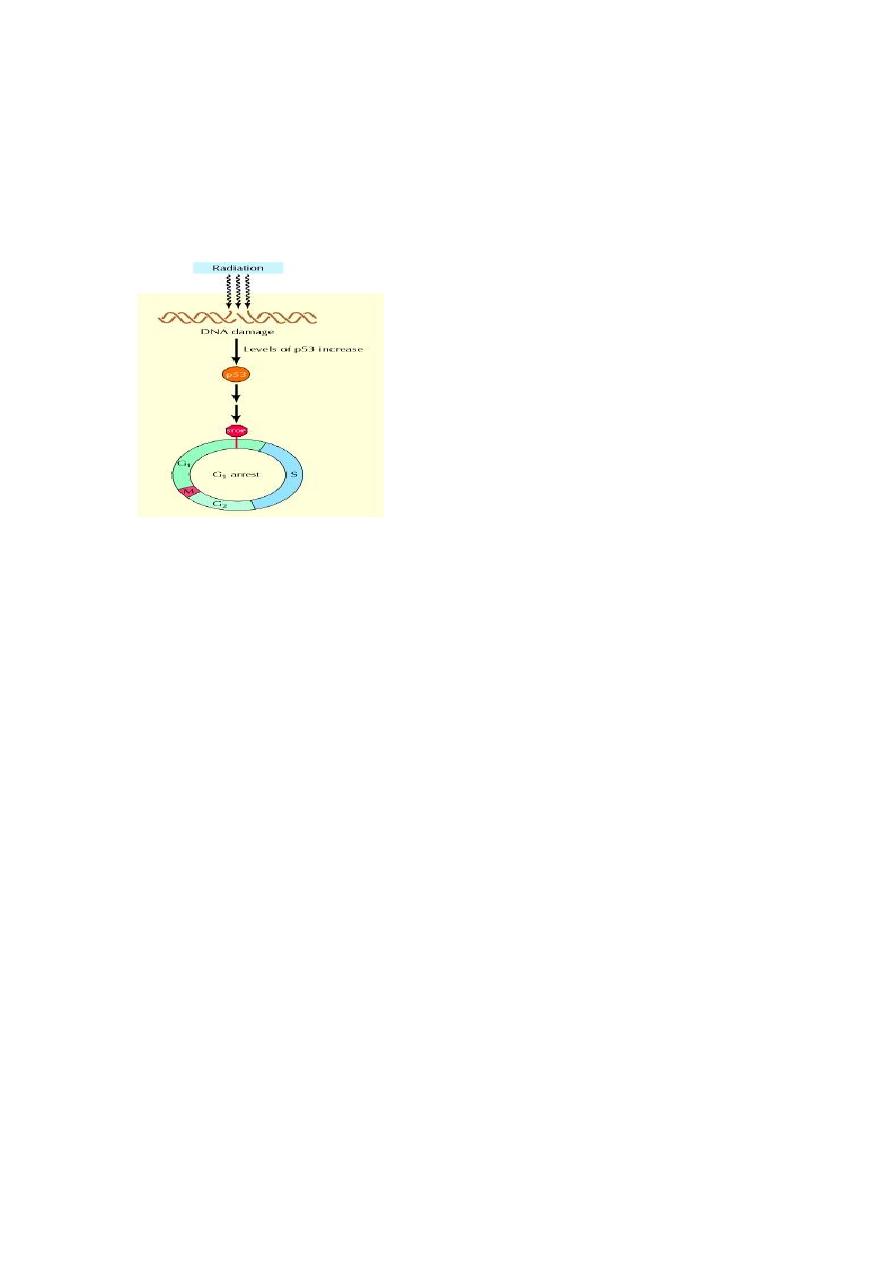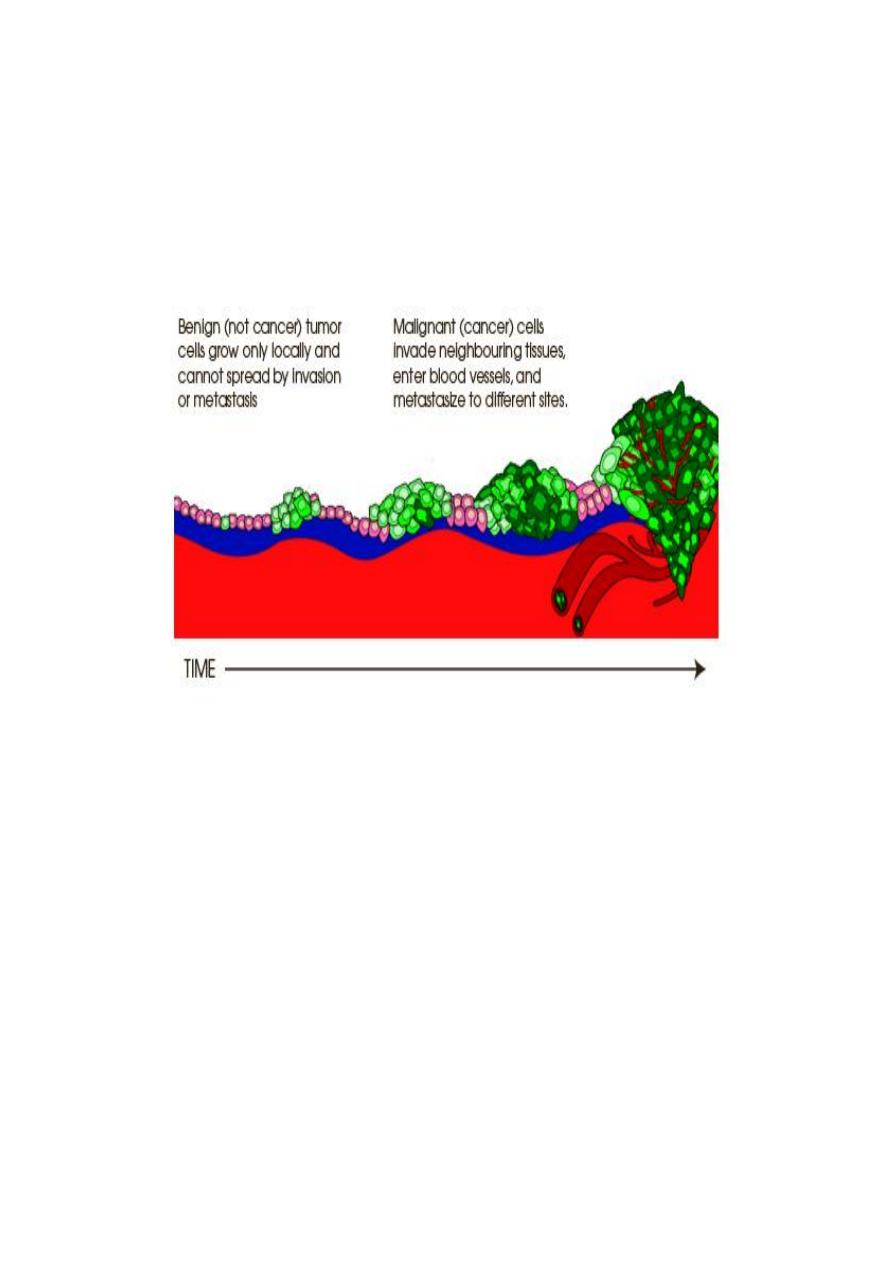
Lec. No.13
Regulation of eukaryotic cell cycle
Regulation of the cell cycle involves processes crucial to
the survival of a cell, including the detection and repair of
genetic damage as well as the prevention of uncontrolled cell
division. The molecular events that control the cell cycle are
ordered and directional; that is, each process occurs in a
sequential fashion and it is impossible to "reverse" the cycle
Two key classes of regulatory molecules, cyclins and cyclin-
dependent kinases The (CDKs), determine a cell's progress
through the cell cycle.
Kinases are enzymes that activate proteins by transferring a
phosphate group from ATP to the protein being activated. An
activated protein is needed for the cell cycle to proceed from G1
to S. Similarly, another activated protein is needed to move the
cycle from G2 to mitosis.
Kinases activate these proteins and thus stimulate the cell
cycle to continue.
Kinases are normally inactive and must be activated before
they can activate other proteins. Cyclin-dependent kinases
become activated by combining with a protein called cyclin.
Under normal conditions, cyclin combines with kinase only
when growth factors are present. For example, damaged tissue
releases growth factors to stimulate cell division needed to
repair the tissue.
S-Kinase combines with S-cyclin and the resulting active
complex stimulates DNA replication.
The p53 protein has many mechanisms of anticancer
function and plays a role in apoptosis by forcing unfunctional or
bad cells to commit suicide. p53 is a protein that functions to
(7)

block the cell cycle if the DNA is damaged is severe this protein
can cause apoptosis (cell death). P53 levels are increased in
damaged cells. This allows time to repair DNA by blocking the
cell cycle.
Some growth factors are being used in medicine, one
example is erythropoietin, which stimulates proliferation,
differentiation, and survival red blood cell (erythrocytes)
precursors in the bone marrow.
The organism has elaborate regulatory systems that control
cell reproduction& differentiation are controlled by a group of
genes called Proto-oncogenes, alterating the structure of
expression of these genes promotes the production of tumors.
There are trillions of living cells in the body that grow, divide,
and die in an orderly fashion. This process is tightly regulated
by the genes within a cell’s nucleus. These genes code for
proteins that help regulate cell growth. These important genes
are called proto-oncogenes. A change in the DNA sequence of
the proto-oncogene gives rise to an oncogene, which produces a
different protein and interferes with normal cell regulation.
Proto-oncogenes have many functions in a cell but they often
code for proteins that stimulate cell division, prevent cell
(8)

differentiation or regulate programmed cell death (apoptosis).
These are all essential processes required for normal growth,
development and the maintenance of healthy organs and tissues.
However, a mutated or defective version of a proto-oncogene
(oncogene) increases the production of these proteins, thereby
leading to unregulated cell division, a slower rate of cell
differentiation and increased inhibition of cell death. Together,
these features define cells that have become cancerous.
Several factors that inhibit cell reproduction are collectively
called Chalones. Several factors (e.g., chemical substances,
certain types of radiation, viral infections) can be induce
abnormal cell proliferation that bypasses normal regulation
mechanisms for controlled growth and result in the formation of
tumors.
Chalones: Polypeptides or glycoproteins, released by actively –
dividing cells that inhibits chromosomal reproduction (mitosis)
in cells of the tissue in which they are formed, thus controlling a
tendency to hyperplasia.
The term tumor, initially used to denote any localized swelling
in the body caused by inflammation or abnormal cell
proliferation.
A tumor which is caused by abnormal proliferation of cell may
either Benign or Malignant.
Benign: Not malignant. A benign tumor is one that does not
invade surrounding tissue or spread to other parts of the body; it
is not a cancer.
Malignant: rapid growth & invade other tissues, spreading
throughout the body (metastasis). Only malignant tumors are
properly referred to as cancer.
Malignant tumors are formed from abnormal cells that are
highly unstable and travel via the blood stream, circulatory
system and lymphatic system.
(9)

Cancer, can result from abnormal proliferation of any of the
different kinds of cell in the body. So there are more than a
hundred distinct types of cancer, which can vary substantially in
their behavior and response to treatment
(10)
